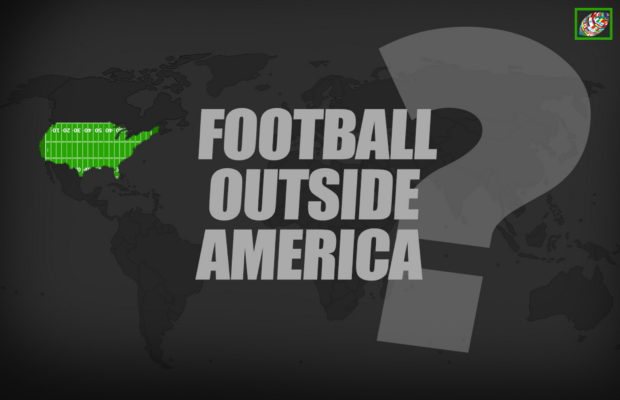America’s lack of exposure to its most beloved sport played abroad

For years, Americans have had a passion for what they call football, packing tens of thousands of spectators (sometimes over one hundred thousand) into college and NFL stadiums on a weekly basis in the fall, while even more people watch from their couches at home.
But they do not show the same devotion to American football outside of the United States. In fact, there are very few football fans who know anything about where and how the game is played in other countries. Whereas many Americans have some level of familiarity with international organizations such as basketball leagues in Europe and Australia, hockey leagues of Canada and Europe, and baseball leagues of Asia and Latin America, most football fans have limited knowledge of to what extent the sport is played abroad.
To get a better sense of this, I talked to a couple American football fans about their knowledge of football played outside of the United States.
One fan, Michael, said
“I really don’t know much about how the game is played abroad. Don’t they play it in Canada with weird rules?”
Another, named Conor, echoed similar feelings, wondering if they played the sport in Europe and whether or not the rules would be similar. He was not familiar with NFL Europe, a now-defunct league affiliated with the NFL, or any of the current leagues that exist in Europe.
There are a variety of factors that can explain this lack of knowledge. For one, quite frankly, American football leagues in other countries pale in comparison to the dominant force that is the NFL in the United States. Per USA Today, the NFL raked in over sixteen billion dollars in revenue in 2018, while the Canadian Football League, the second-most prominent American football league in the world (although it must be noted the league has a multitude of rules that are different than the sport that is played in the United States), only made less than 250 million dollars. Furthermore, whereas the MLB, NBA, and NHL all have a substantial number of international players, only about 3% of NFL players were born outside of the United States.
When asked, both Michael and Conor could not name an active international player on an NFL roster. The closest they came was when Conor mentioned Tim Tebow, a Heisman winner who was born in the Philippines but has lived in the United States for the vast majority of his life.
One way in which Americans can come to know more international players is by following the NFL’s International Player Pathway Program (IPP). The league created the IPP in 2017 with the purpose being to give a selected group of international athletes the chance to train in the United States in the hopes of earning a spot on an NFL team. Programs like these are a great way to showcase the sport to foreign audiences and to showcase some talented foreign players to Americans.
It is safe to say that football fans in the United States would welcome seeing the game grow internationally. Perhaps an effective strategy for this would be American investment in American football programs abroad to find elite athletic talent (that could potentially be recruited to the US), to further develop the current football organizations in other countries, and to teach the game to those who are unfamiliar with it. The IPP is a good start, but the NFL should not slow down in trying to bring its product to other countries.
While American football will dominate the American market and will be dominated by American athletes for the foreseeable future, it would be great to see the sport continue to grow abroad to the point where the average American fan is knowledgeable about the status of the sport beyond the borders of the United States.